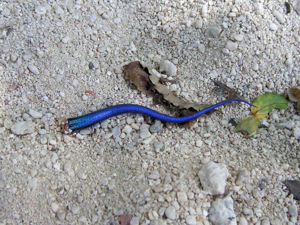Difference between revisions of "Lizard Musculoskeletal System"
m |
|||
| Line 13: | Line 13: | ||
* Mader, D.R. (2005). ''Reptile Medicine and Surgery''. Saunders. pp. 1264. ISBN 072169327X | * Mader, D.R. (2005). ''Reptile Medicine and Surgery''. Saunders. pp. 1264. ISBN 072169327X | ||
| − | [[Category:Lizard_Anatomy]] | + | [[Category:Lizard_Anatomy|M]] |
Revision as of 13:14, 11 March 2010
| This article is still under construction. |
Like other reptiles, lizards have a single occiptal condyle. Ribs are present on all vertebrae except tail and cervical vertebrae.
Autotomy
Several families of lizard can voluntarily discard the tail when seized by a predator. The discarded wriggling tail is thought to distract the attention of the predator, enabling the lizard to escape. The animal is able to grow a new tail, although the regenerated tail is never as long or well formed as the original.
Lizards that are capable of autotomy have a vertical fracture plane through the body and part of the neural arch of the tail vertebrae. This is a plate of cartilage or connective tissue that develops after ossification. Autotomy and regeneration occur in many iguanid species but not in many agamids, monitors and chameleons.
References
- Mader, D.R. (2005). Reptile Medicine and Surgery. Saunders. pp. 1264. ISBN 072169327X
